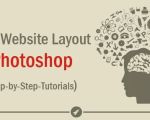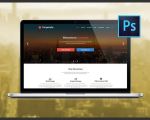- 1-clarify-client-business-and-goals
- 2-understand-target-audience-and-user-expectations
- 3-discuss-website-functionality-and-features
- 4-explore-design-preferences-and-brand-identity
- 5-address-content-strategy-and-responsibilities
- 6-define-project-timeline-budget-and-maintenance
1. Clarify Client Business and Goals
When starting a website design project, the first crucial step is understanding the client’s business and their main objectives for the site. Asking questions such as “What is your business about?” and “What are the primary goals you want to achieve with this website?” helps set the foundation. Whether the client wants to increase sales, generate leads, provide information, or build brand awareness, knowing these goals guides the entire design process.
For example, a retail client focused on e-commerce will have very different needs compared to a local service provider aiming to showcase their expertise. Understanding the business context ensures your design aligns with their strategic vision, increasing project success and client satisfaction.
2. Understand Target Audience and User Expectations
Another essential question revolves around the client’s target audience. Ask, “Who is your ideal customer or website visitor?” and “What are their preferences and behaviors online?” This insight allows you to tailor the user experience specifically to those visitors. Knowing the audience’s demographics, interests, and technical savviness can influence everything from navigation to visual style.
For instance, designing for young, tech-savvy users might focus on dynamic visuals and mobile responsiveness, whereas an older audience might require simpler interfaces and clearer calls to action. Clarifying these points upfront avoids costly redesigns later and ensures the website truly serves its intended users.
3. Discuss Website Functionality and Features
Functionality is the backbone of any website. Key questions here include: “What specific features do you want?,” “Will you need e-commerce capabilities, booking systems, or user registration?” and “Do you require integration with other tools like social media or CRMs?” Understanding these needs upfront ensures you select the appropriate technologies and plan for scalable solutions.
Consider a client wanting an online store: you’ll need to discuss payment gateways, product catalogs, and shipping options. Another client may focus on content sharing, needing robust blogging or multimedia capabilities. Accurate functional requirements prevent scope creep and ensure smooth development.
4. Explore Design Preferences and Brand Identity
Design speaks volumes about a brand. Ask clients about their preferences with questions like “Do you have existing brand guidelines or colors?” and “Are there websites you admire for style or usability?” This allows you to align your creative direction with their vision. Whether they prefer minimalist modern designs or vibrant, bold visuals, early alignment is crucial.
In one case, a startup wanted a sleek, tech-oriented look reflecting innovation, while another local restaurant requested warm, inviting aesthetics to match their hospitality brand. Discussing these preferences helps you avoid guesswork and delivers a website that feels authentic and resonates with visitors.
5. Address Content Strategy and Responsibilities
Content is king, and understanding who will create and maintain it is vital. Ask “Will you provide the content, or do you need content creation services?” and “What types of content will be featured—blogs, videos, product descriptions?” Clarifying this ensures the website is populated efficiently and remains relevant post-launch.
Clients sometimes underestimate the importance of content planning, leading to empty pages or disorganized layouts. Advising clients on ongoing content updates or recommending professional copywriting services can enhance the website’s effectiveness and SEO performance.
6. Define Project Timeline, Budget, and Maintenance
Finally, practical considerations like timeline and budget must be clear. Questions such as “What is your deadline for launch?” and “What budget range have you allocated?” help in setting realistic expectations. Additionally, discussing post-launch maintenance responsibilities ensures the website remains functional and up-to-date.
One client wanted a rapid deployment for an event launch with a flexible budget, while another prioritized cost efficiency over speed. Understanding these parameters upfront facilitates smooth project management and client satisfaction.
Asking the right questions when designing a website is fundamental to delivering a successful project. For more expert advice, tools, and services tailored to your web design needs, visit SitePoint 24. Our resources will help you navigate client communication effectively and create websites that truly stand out.








